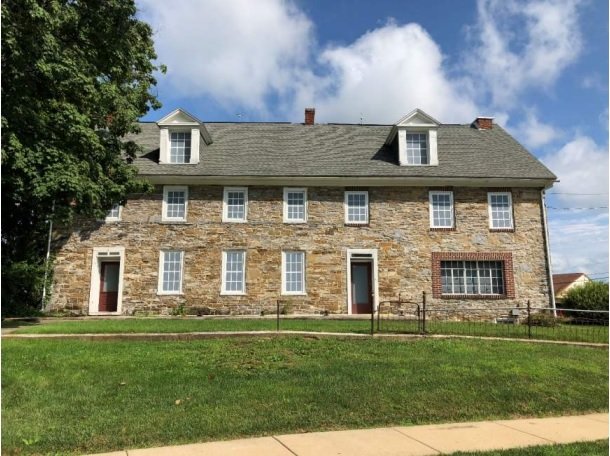What we can learn from the Hoke House
The Hoke House is a stone, Georgian-style building on the northern edge of Spring Grove borough in York County. The building is significant as an early tavern for travelers along the former Monocacy Trail and as an example of traditional tavern architecture in south central Pennsylvania. It is the oldest building in Spring Grove and one of the oldest in York County. In 2018, I wrote a determination of eligibility for the Hoke House, outlining the building’s history and significance to York County’s development. You can read the full report here. Despite its significant history, the Hoke House has been repeatedly threatened by development and obsolescence.
In 2008, a new owner purchased the Hoke House and constructed a convenience store in the northern portion of the property. In early 2014, the owner applied for and received a permit to demolish the Hoke House. After opposition from the public and a local group, The Friends of the Hoke House, the building owner agreed to delay demolition. Repairs were made to stabilize the house in December of 2014. Since then, the Friends of the Hoke House have been working to find a new use for this community landmark. A feasible plan for reuse has failed to materialize, and the building owner recently re-applied for a demolition permit. The permit was approved by the borough today and the Hoke House will likely be demolished in the coming weeks.
Unfortunately, tavern buildings across York County are disproportionally threatened by demolition. Their location along major transportation routes means that there is increased development pressure on these properties. Additionally, tavern buildings are usually large, with multiple building campaigns and many small interior rooms. This makes them difficult to reuse and bring into compliance with current building codes. Most recently, the Ehrhart Tavern in Springfield Township was demolished to make way for more development along the Interstate 83 corridor. Taverns are a unique building type and a direct link to the history of York County’s transportation patterns and development. Losing them erases a tangible link to this history.
The heartbreaking loss of the Hoke House is a tragedy for York County – but one that was entirely avoidable. The time to protect historic buildings is not in the eleventh hour, after an unsympathetic building owner has acquired the property. Local municipalities need to protect these properties before they are threatened. The only way to do that is to identify the significant places in a community before a threat exists. Historic Resource Surveys can be conducted to identify and assess the historic properties within a given location. Once historic buildings are identified, local municipalities can decide to protect them through historic preservation ordinances or restrictive zoning, if necessary. Developers aren’t likely to buy a building that isn’t zoned for development, and the unlikelihood of gaining a demolition permit where a historic preservation ordinance exists will turn away most buyers not interested in a building’s history. Spring Grove had the potential to protect the Hoke House for almost 10 years through either of these channels, but they failed to act. Now the building owner is well within their rights to demolish this significant historic building.
Another way to protect historic buildings from demolition is through easements. Easements can be placed on a building by the building owner to protect historic, architectural, or archeological elements of a property. Easements are a flexible tool that can be tailored to meet the particular significance of the property and the building owner’s desires. Of course, an easement requires the consent of the building owner and isn’t likely to save a property already threatened by demolition. Again, the time to act is long before a threat exists.
Many of us drive past historic landmarks every day, and we incorrectly assume they will be there forever. It takes proactive efforts by local municipalities and community members to make sure the places we care about survive for generations to come.

